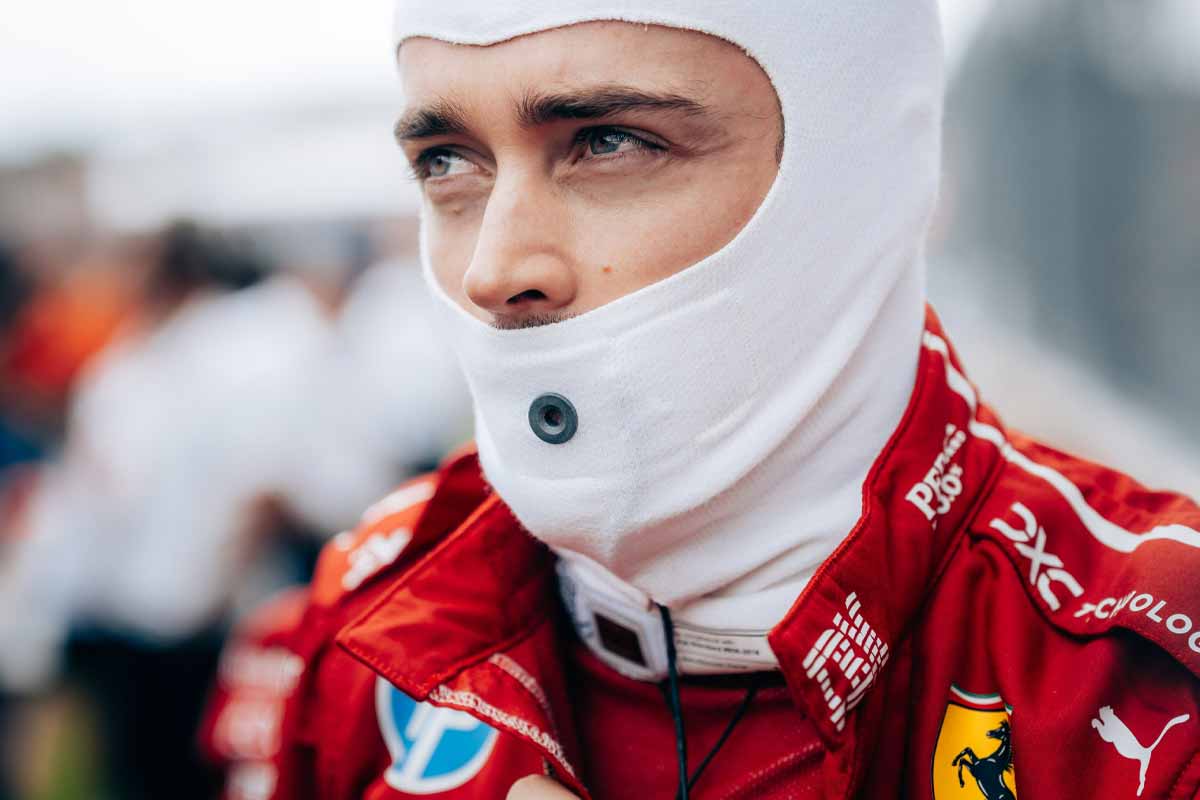
The Grand Prix F1 of Hungary 2025 will be remembered as a wasted opportunity for Charles Leclerc. After leading most of the race with a solid, consistent pace, the Monegasque driver inexplicably dropped down the order in the final stint, finishing 4th after being easily overtaken by Piastri and then Russell. Since then, many hypotheses have been put forward in an attempt to explain this wreck of a performance, and voices diverge, between conjectures from rivals, technical analyses and denials from the team. Scuderia Ferrari.
Russell talks about an "almost illegal" Ferrari
The most trenchant of all spoke after the race: George Russell. The Mercedes driver made no secret of his astonishment at Leclerc's sudden loss of pace, which he believes was due to a technical decision by Ferrari to avoid disqualification.
"If Charles doesn't tell you, then his F1 was going to become almost illegal," blurted out Russell, convinced that the Scuderia had raised ground clearance by increasing tire pressure to avoid excessive wear on the floorboard (that part under the car which, if trimmed too much, leads to disqualification as was the case for Hamilton in China).
Russell adds that Ferrari would also have activated an engine mode limiting power in the straights, where ground friction is greatest. A choice which, combined with a higher car and therefore less efficient cornering, would have hampered Leclerc's performance at the end of the race.
Ferrari counters: "Bullshit".
At Ferrari, the response was swift. Frédéric Vasseur, director of the Scuderia, categorically rejected Russell's thesis.
"Bullshit. When you manage the board, you lose two or three tenths. Here, it was two seconds! It's very different."
In his opinion, a more serious problem, possibly mechanical, was behind the sudden loss of pace. Vasseur describes the car as "unmanageable", a "disaster" in terms of balance, and admits that when he left the circuit, even the team didn't know exactly what had broken.
"So far, no, not even in the data... But probably will after we search the factory when we get back."
More and more technical leads
In the absence of a clear official answer, keen observers have immersed themselves in the available data, and theories abound.
Some pointed to the management of the FS1 engine mode, which modifies the way hybrid energy is deployed. At the start of the 3rd stint, Leclerc was using this mode, gaining time in the corners. But this gain collapsed lap after lap, until it became non-existent. Even when we switched back to a mode that favored straight-line top speed (EOSS), overall performance didn't return. This suggests that the problem was not with the engine, but with the chassis or the car's behavior.
Another more technical theory circulating among analysts is the weakening of the link between the new suspension arms and the chassis. Ferrari recently modified its rear suspension to improve cornering performance. But this evolution may have generated greater stresses on certain parts of the chassis. After the Spa GP, where the suspension endured significant vertical loads, a micro-crack or weakening could have turned into a major failure in Hungary.
A mystery that reveals Ferrari's fragility
The Hungarian GP, where Ferrari took pole and dominated for 40 laps, shows just how much performance there is... but consistency is still lacking. As Vasseur himself admits: "We're still too inconsistent over the weekend. The progress over a lap is real, the initial stints were mastered, but the slightest technical anomaly still seems capable of tipping the race into the incomprehensible.
Leclerc, visibly frustrated, spoke of a chassis problem on the radio and claimed that his car was "not drivable". The driver no longer concealed his exasperation at this chronic irregularity, at a time when Ferrari seemed at last to be regaining positive momentum.
Theories differ, but one thing is certain: Charles Leclerc's performance gap in Hungary cannot simply be explained by a failed strategy or a drop in form. Whether it was a choice to avoid disqualification, a chassis fault, or a fragility linked to the new suspension, Ferrari will have to quickly draw conclusions from this misadventure.